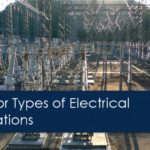Understanding and complying with electrical regulations, even in temporary work environments, is important for a safe and efficient work environment. Besides keeping the workers safe, these regulations help you avoid disruptions at work and expensive fines for non-compliance.
Electrical standards and regulations change to match technological advancements. To ensure compliance, you need an effective strategy that helps you understand and apply current regulations. This article outlines five effective strategies for ensuring electrical compliance in temporary work environments.
Conduct a Thorough Risk Assessment
Conduct a thorough risk assessment before starting a job in a temporary work environment. Check the entire environment for electrical hazards, such as exposed wiring, underground and overhead power lines, and any potential for wet conditions.
During your risk assessment, develop a safety plan. Your plan must be clear and detailed to provide the needed guidance. It should outline the procedures for working safely and other emergency procedures.
Ensure Safe Work Practices
Another timeless way to ensure electrical compliance is to ensure safe work practices. Establish and implement safety policies in your temporary work environment. Start by mandating workers wear appropriate protective equipment, such as insulated gloves, when working with electrical equipment and machines.
Ensure that all electrical equipment is properly grounded to prevent shock hazards. Use a ground fault circuit interrupter (GFCI) or residual current devices (RCD) at every plug-in point to reinforce safety if your temporary work environment has many wet sections.
Implement lockout and tagout procedures to de-energize and isolate electrical equipment when not in use and before conducting any maintenance or repair. Ensure workers do not overload circuits or use unfused adaptors to prevent fires.
If possible, use lower voltage portable tools. You can get portable commercial generators to meet your power needs without breaking the voltage regulations for temporary work sites.
Provide Electrical Safety Training
Electrical safety training equips workers to comply with electrical regulations in a temporary work environment. Ensure all workers receive sufficient training on the safety procedures and electrical hazards specific to your temporary environment.
Ensure all new workers receive this training before working on your temporary site. Depending on the length of your work, review your training to update and refresh your workers.
Your training must educate workers on the dangers of electricity and how to identify and avoid hazards. Use clear warning signs around the work environment to warn workers of potential electrical hazards.
Ensure Proper Documentation
Keep detailed and accurate records of all electrical inspections and maintenance, and document them appropriately. Ensure that inspectors and maintenance personnel review these records before conducting new repairs or maintenance.
It is also important to document all electrical safety standards, policies, and procedures and make them readily available to all workers in the temporary work environment. Update these documents when necessary and ensure each worker can access the updated copies.
Use Qualified Personnel
Only qualified personnel should be allowed to operate and use electrical equipment and machines. Similarly, only qualified and trained workers should conduct repairs and maintenance on any electrical equipment.
All electrical work, repairs, or maintenance must be conducted in the presence of a qualified supervisor. This professional will ensure that the tools, work conditions, and practice comply with current electrical regulations.
Endnote
Complying with electrical regulations in a work environment is important to ensure safety and prevent disruptions. You can ensure compliance in a temporary work environment by conducting a thorough risk assessment, ensuring safe work practices, providing electrical safety training, and using qualified personnel.






